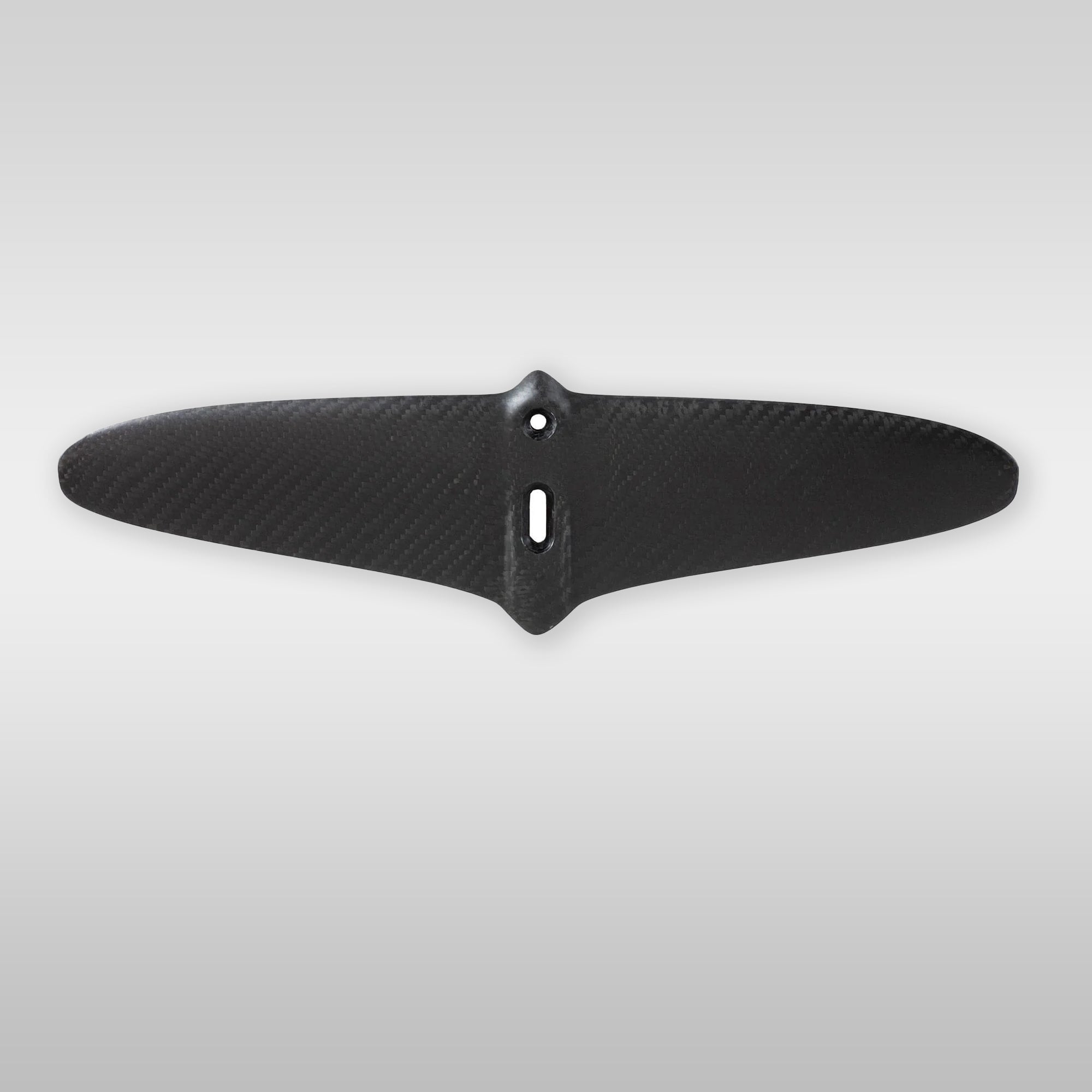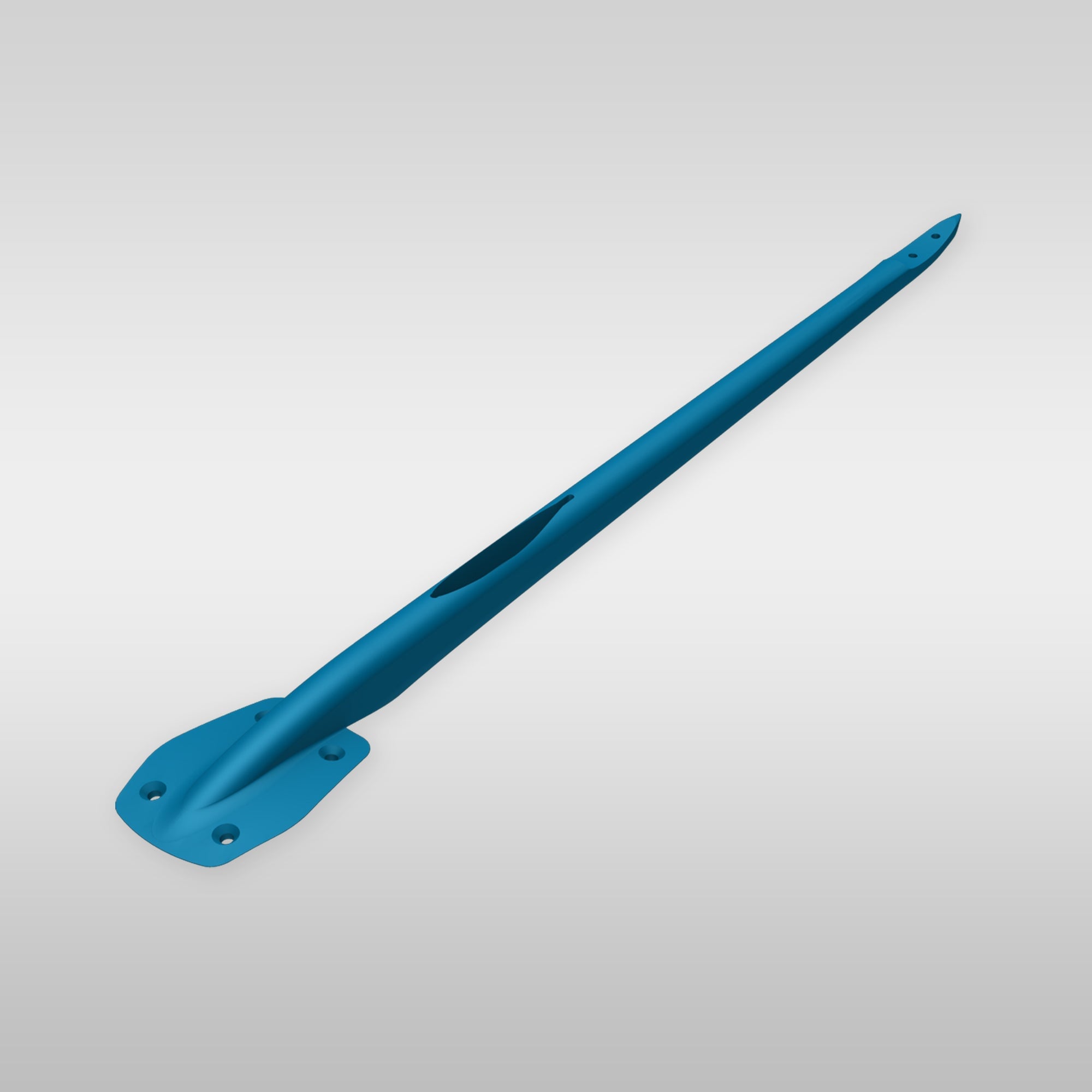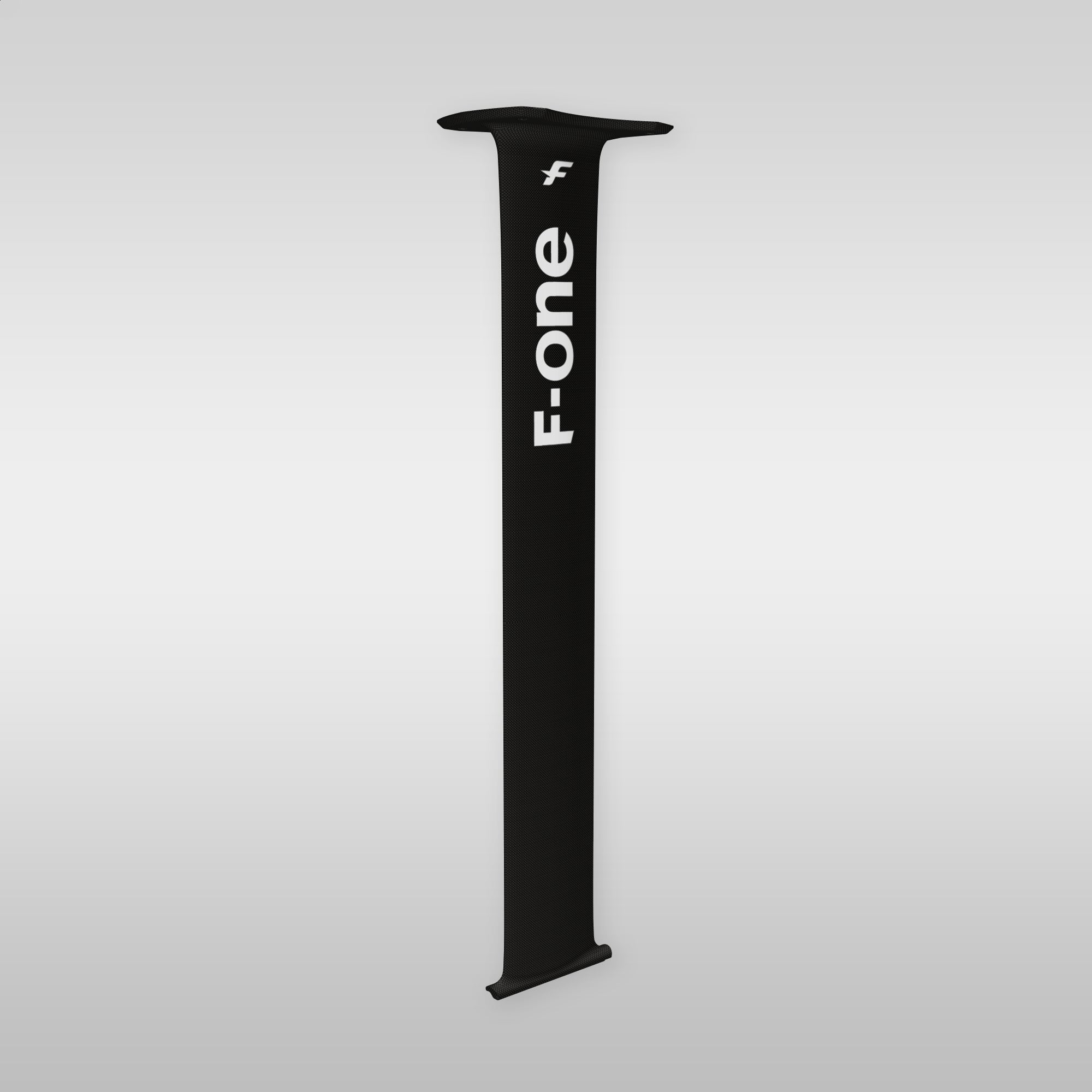How do I find the right wingfoil for my personal needs?
We don't want to leave you alone with this question and have summarized the most important aspects of choosing a foil for you.
Still not sure?
Then get in touch with us for an expert advice.
We don't want to leave you alone with this question and have summarized the most important aspects of choosing a foil for you.
Still not sure?
Then get in touch with us for an expert advice.
One of the most important factors when choosing a foil is the surface area.
In general, foils over 1500 cm² are well suited for beginners. Of course, the choice always depends on many factors such as body weight. These foils generate enough lift to lift the board out of the water even at low speeds and at the same time ensure the greatest possible stability.
As riding ability increases, the desire for a smaller foil becomes ever greater. A smaller surface area goes hand in hand with less resistance and therefore higher speed. However, foils of 1000 - 1500 cm² require more attention from the surfer. If you have a good command of the pumping technique, you can start foiling almost as quickly as with the larger alternatives. The higher speed lets you fly through wind holes with ease.
Advanced surfers and experts should also take a look at foils with a surface area of less than 1000 cm². They require a high level of skill and allow spectacular speeds.
Just as important as the surface area is the span and the associated profile.
The term "aspect ratio" describes nothing other than the ratio of the wingspan to the surface area. Generally speaking, "low-mid aspect" foils have a thick and deep profile with a large surface area and a small wingspan. They fly stable and turn easily. They also generate a lot of lift and help you to take off even at low speeds and with little wind.
The "High Aspect" foils are thinner and have a large wingspan. They are very efficient and glide better through wind holes. You need a little more speed to take off and they require more feeling when foiling. In return, you achieve a higher final and average speed.
The "aspect ratio" also influences the turning radius. With the same surface area, an HA foil turns with a wider radius than an LA foil.
The backwing plays almost as important a role as the frontwing. It influences the entire behavior of the foil. Simply changing the backwing with the same frontwing can provide a big performance boost.
A large stabilizer witha lot of surface area is importantfor beginners. It provides a lot of lift and stability.
On the other hand, a small, stretched backwing providesless drag, more speed, tighter turns andimprovedmaneuverability.
The fuselage is the connection between the two wings and the mast.
Just like a larger or smaller backwing, the length of the fuselage also has a significant influence on the handling.
In general,the longer the fuselage, the more stable the foil flies.A short fuselage of less than 70 cm makes the foil more agile and manoeuvrable. A long fuselage is therefore recommended at the beginning to make it as easy as possible to get into the sport.
Many manufacturers offer a choice between aluminum and Carbon Masts.
Aluminum Masts are more robust against external influences and significantly cheaper to buy. This makes them ideal for beginners. The Carbon are lighter, slightly stiffer and therefore perfect for anyone who wants to get the most out of their equipment.
The right mast length:It is more comfortable to learn to wingfoil with a short mast, as you fall from a low height if you fall. However, you also have little time to react to avoid a fall. A mast of around 60-75 cm is ideal for beginners. In shallow waters, a short mast is of course essential.
On the other hand, a long mast gives you more leverage and allows you to perform more radical maneuvers without the foil coming out of the water.
By phone, e-mail or live chat.
We ship worldwide.
Are you unsure? Please get in touch with us. That way we can avoid unnecessary shipping.
So you have enough time to think about it :)


